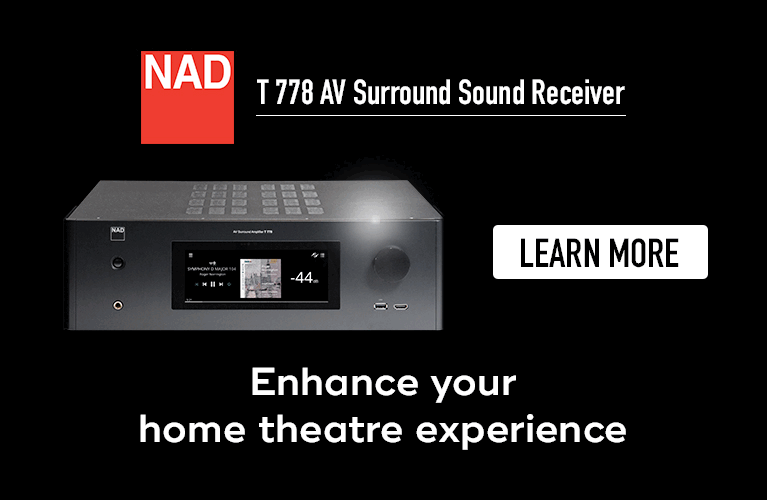Note: Measurements taken in the anechoic chamber at Canada's National Research Council can be found through this link.
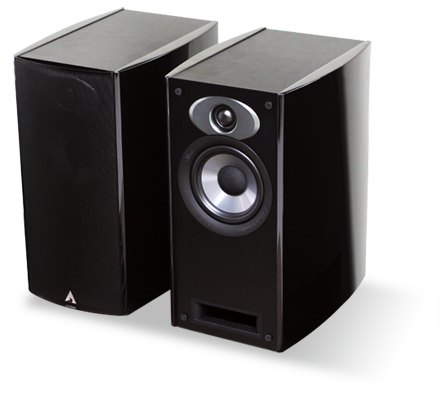 Ported cabinets, bigger cabinets, bigger woofers, more woofers, passive radiators, transmission lines -- all are methods that can be used, singly or in combination, to increase a speaker’s low-end output. Floorstanding speakers have an inherent advantage in reproducing deep bass because they have larger cabinets, and often multiple drivers to move a greater volume of air. Smaller, bookshelf speakers are at a disadvantage in this regard.
Ported cabinets, bigger cabinets, bigger woofers, more woofers, passive radiators, transmission lines -- all are methods that can be used, singly or in combination, to increase a speaker’s low-end output. Floorstanding speakers have an inherent advantage in reproducing deep bass because they have larger cabinets, and often multiple drivers to move a greater volume of air. Smaller, bookshelf speakers are at a disadvantage in this regard.
American speaker company Atlantic Technology claims to have found a solution to what they describe as the “Iron Law” of bookshelf speakers: that deep bass, good sensitivity, and small cabinet size are mutually exclusive. Their AT-2 bookshelf model employs several design features, most notably Atlantic’s Hybrid Pressure Acceleration System (H-PAS), intended to produce powerful low end from a fairly small enclosure. Like most audiophiles, I prefer speakers that can generate realistic bass; I was curious to hear what the AT-2 could do.
Description
On the surface, the AT-2 ($1800 USD per pair) looks like a conventional bookshelf speaker. It mates a 5.25” long-excursion midrange-woofer cone of graphite-loaded homopolymer (GLH) to a 1.125” low-resonance, silk-dome tweeter. The tweeter has an oversize (4mm) surround of treated textile that permits greater excursion, which helps extend its bandwidth and lets the crossover be set to a low 2.2kHz. Behind the tweeter is an aluminum chamber that lowers its resonant frequency to 700Hz, while simultaneously acting as a large heatsink to help increase power handling and output.
An interesting feature of the AT-2 is that it has a three-position switch on the rear panel, for very slightly adjusting the tweeter’s output level to account for differences in room acoustics and listening preferences. I experimented with all three settings, but settled on keeping the switches in their upright-most position, something I’ll come back to shortly.
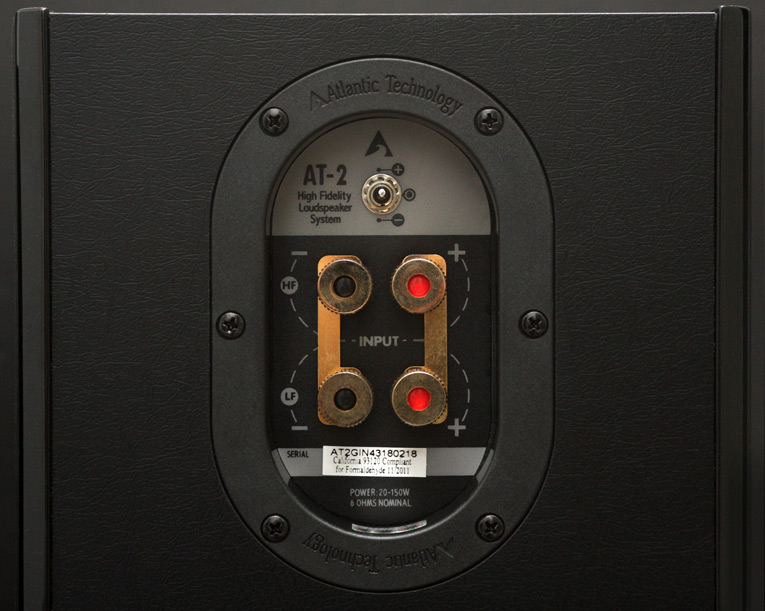
According to Atlantic, the AT-2 combines design elements of bass-reflex, acoustic-suspension, inverse-horn, and transmission-line loudspeakers. When I first read this, I was a bit confused. On the company’s own website, they define acoustic suspension as “a method of enclosing a low-frequency driver in a totally sealed box,” and bass-reflex as “a method of bass loading whereby a woofer is installed in a cabinet and the cabinet has a vent or port that allows the woofer’s backwave to exit the cabinet.” But the AT-2 has a rectangular front port; it’s unclear what elements of the speaker make it an acoustic-suspension design as well.
That detail aside, the AT-2’s most prominent feature is the patented H-PAS system, an aspect of cabinet design that pressurizes the air pushed by the backward motion of the midrange-woofer, causing it to accelerate as it travels through the cabinet and out of the port. H-PAS was developed by Philip Clements, the designer for Solus/Clements Loudspeakers, with which Atlantic Technology has partnered to develop a range of H-PAS models. Atlantic now offers three such speakers, including the AT-1 floorstander, reviewed by Ron Doering in GoodSound!, and the recently introduced PB-235 powered soundbar.
To explain how H-PAS works, Atlantic Technology uses the analogy of a garden hose. Water running out of the end of the hose flows at a certain rate. When the spigot is opened further, the rate of flow increases, but not by much. But if you cover part of the hose end with your thumb, this increases the water pressure, which causes the water to exit the hose at a greater velocity. This is the principle behind H-PAS: Air pushed into the cabinet by the rearward motion of the midrange-woofer travels through a transmission line (a tunnel), and exits the speaker through an opening at the base that’s smaller than the driver’s radiating area. Any speaker with a port smaller than the radiating area of the driver it’s connected to will experience this garden-hose effect, and many speaker manufacturers exploit this principle.
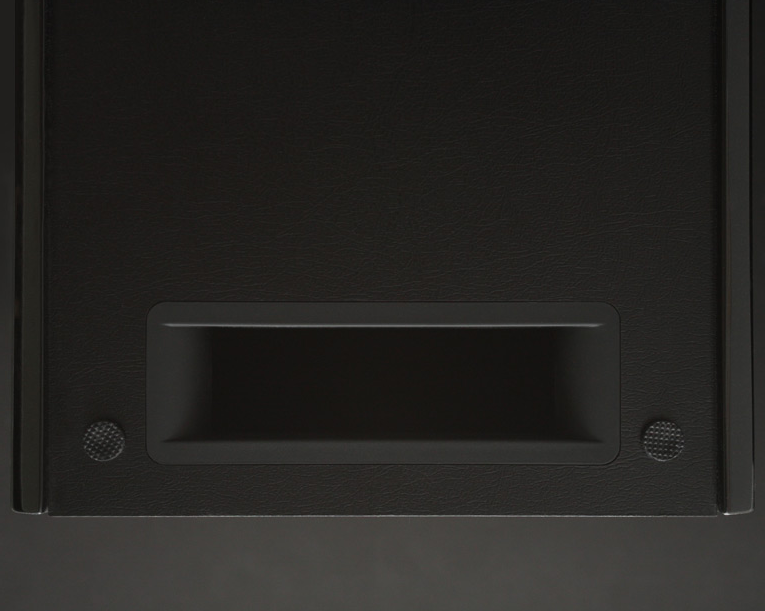
Accelerating air through a small opening might help produce deeper bass, but when poorly implemented it can actually degrade the sound. As fellow SoundStage! Network writer S. Andrea Sundaram pointed out to me, at high speeds airflow can become turbulent, which causes distortion; air forced through a poorly designed port causes audible “chuffing.” Furthermore, sufficient backpressure from the port causes nonlinearity in the driver’s motion, which introduces other sorts of distortion. Suffice it to say that the folks at Atlantic Technology know how to design a port -- I never heard any chuffing or distortion with any of the music I played through the AT-2s.
Atlantic claims for the AT-2 a frequency response of 41Hz-20kHz, +/-3dB. If accurate, this is an impressively wide bandwidth for a speaker that measures only 15.6”H x 8.9”W x 12.5”D and weighs just 23 pounds. The claimed sensitivity is relatively high, at 88dB/W/m, and the nominal impedance is 6 ohms. Both specs suggest a speaker that should present to an amplifier a fairly benign load, and that was my experience with the AT-2s -- it was easy to drive them without ever taxing my 100Wpc integrated amplifier. Atlantic recommends 20-150Wpc of amplification, which means that even a good A/V receiver should be sufficient. But each AT-2 also has two pairs of gold-plated binding posts, so you can biwire or biamp the speakers if you prefer.
The side panels are finished in gloss-black metal-flake paint; the top, front, and rear come in a leather-grained surface. The front baffle’s very clean look is courtesy the absence of any mounting hardware for the drivers. The oval metal plate that surrounds the tweeter gives the AT-2 a modern appearance, and nicely complements the gray GLH midrange-woofer. For the most part, I thought the AT-2s looked pretty inconspicuous; a day or two after inserting them in my system, I found that they sort of disappeared at the front of my room. Although magnetically attached grilles are supplied, I kept these off for my listening -- something I almost always do, unless a manufacturer specifies otherwise.
Set atop 24” Osiris stands, the AT-2s became part of a system comprising a Bryston B100 SST integrated amplifier, to which they were connected with AudioQuest Type 4 speaker cables terminated in banana plugs. An NAD C 542 CD player served as a transport, sending its digital signal to the Bryston’s onboard DAC through an AMX Optimum AVC31 coaxial cable. A Thorens TD-160HD turntable with Rega RB250 tonearm and Dynavector DV-10X5 high-output moving-coil cartridge played LPs, while music was streamed wirelessly from my Apple iMac computer through an Apple AirPort Extreme to an Apple Airport Express. An XtremeMac XtremeHD TosLink cable connected the Express to the Bryston’s DAC. Everything was plugged into an ExactPower EP15A power-line conditioner-regenerator.
Sound
Atlantic Technology goes to some effort to describe how much bass the AT-2 can produce, so that seemed a good place to start the review. How did they fare down there?
Pretty good. The AT-2s delivered enough bass that prospective buyers likely won’t find themselves wishing they had floorstanding speakers or a subwoofer. Their authority in the lows impressed me, particularly considering its size and the fact that it achieved this with a single 5.25” (not even 6.25”!) driver in each speaker. Had the AT-2s been hidden behind a curtain, I might have thought them much bigger speakers.
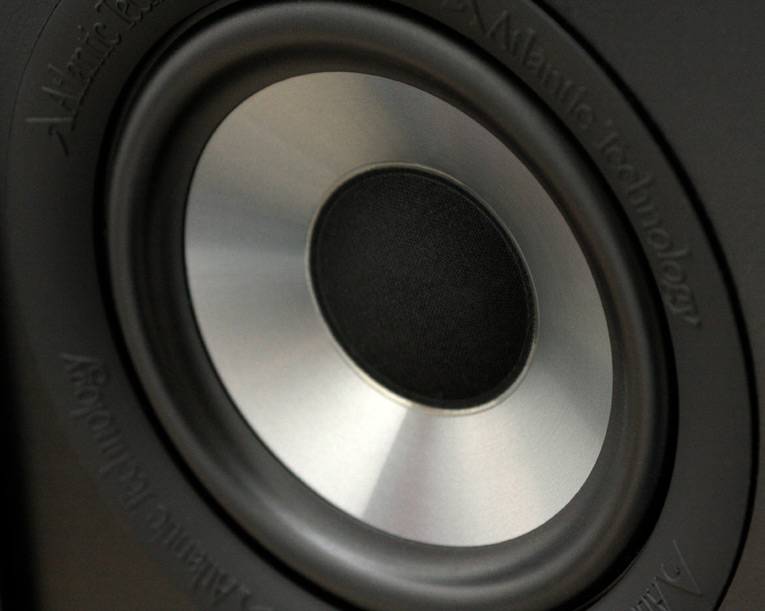
Not only did the Atlantics energize my room with a voluminous low end -- the quality of the sound was just as notable. The AT-2s produced tight, punchy bass from its smallish midrange-woofer. With “Fo Yo Sorrows,” from Big Boi’s Sir Lucious Left Foot: The Son of Chico Dusty (CD, Def Jam B001437702), the AT-2s excelled at reproducing beats that were palpable, inducing a head-nodding rhythm that underpinned the voices, which extended from speaker to speaker, each occupying a clearly focused position across the front of the room. On Sir Lucious, Big Boi’s production style is upfront and fat, and it was well served by the Atlantic speakers, whose big, full sound reproduced this track’s heft and impact.
The AT-2s excelled not only at playing deep but loud as well: these speakers could definitely rock out when I needed them to. In the title track of Killer Mike’s R.A.P. Music (CD, Williams Street 384-460-018-2), the thump of the bass had clout, sounding clean and unadulterated as I took liberties with the volume. The Atlantics didn’t flinch in the face of some of my more aggressive listening sessions, always remaining composed and powerful, even at volumes that approached the uncomfortable. This speaks well of the robust quality of the AT-2’s drivers and cabinet, which handled high outputs with relative ease, regardless of what was playing.
I’ll have to wait till this review is published to see how the AT-2 measured, but I heard no obvious anomalies in their frequency response. Atlantic has done a very nice job of voicing this speaker, fulfilling their promise of providing big, nearly full-range sound from a pair of small enclosures, while adding to and detracting from the sound very little.
As I listened to them more, I grew impressed by the AT-2s’ ability to produce a credible soundstage. This was exemplified by the fine job they did sorting out the bluegrass ensemble that performs “Louis Collins,” on Jerry Garcia and David Grisman’s Shady Grove (CD, Acoustic Disc ACD-21). The banter among the musicians that opens this track extended the full width of the room, reaching beyond the outer edges of the speaker cabinets while conveying good depth. The strings were clear and easily distinguished from one another, though they lacked a bit of the zing that more detailed tweeters are capable of revealing. It was for this reason that I kept the tweeter switch on the back in the upright position; it seemed to imbue the high frequencies with a bit of extra energy.
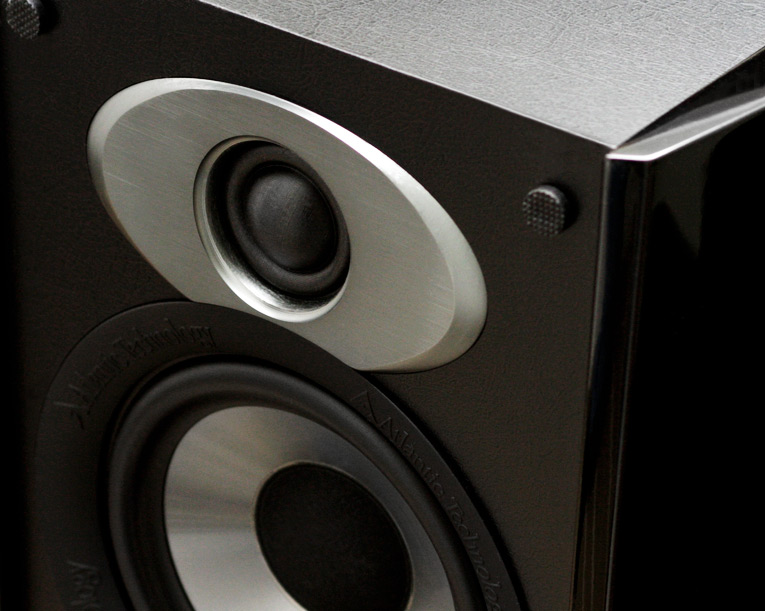
The capacity of the AT-2s to produce a believable soundstage had the added benefit of re-creating a sense of ambience with good recordings, such as Jeff Buckley’s superlative Live at Sin-é (2 CDs, Columbia C2K 89202). When I played the a cappella “Be Your Husband,” the AT-2s admirably captured the atmosphere of the small New York City café where these two performances were recorded in the summer of 1993. Through a good system, this album can transport the listener to the venue -- which is what the AT-2s did in my room.
Their ability to convey space was also evident with “Passenger Song,” from Great Lake Swimmers’ Ongiara (CD, Nettwerk 30691 2). The arrangement is pretty simple, but reverb creates a sense of solitude around singer Tony Dekker, a feeling of isolation that befits the song’s mood. Dekker’s voice sounds clear and open, well focused at the center of the stage and slightly behind the plane of the speakers. As with Buckley’s Sin-é set, the sense of atmosphere was tangible.
Comparison
Amphion’s Argon3L floorstanding speaker ($3995/pair) was designed and is built in Finland, and, like the AT-2, is a two-way design. Its 1” titanium-dome tweeter (in a deep waveguide) is crossed over to its 6.5” aluminum midrange-woofer at 1.6kHz. Two rear ports augment the speaker’s bass output.
Overall, the Amphion and Atlantic Technology speakers sounded more different than alike throughout the audioband. It wasn’t terribly surprising to hear that the Argon3L could play lower and louder than the AT-2; for its size and price, the Atlantic did an excellent job of delivering nearly full-range sound from a fairly compact box, but it couldn’t match the output of the larger Amphion, which is twice as heavy and twice as expensive. With Killer Mike’s “R.A.P. Music,” the AT-2 produced clean, solid lows, but at a point where its output seemed to fall off a cliff, the Argon3L continued to play deeper and with more power. Given the discrepancies in size and price, it would have been unusual if the result had been otherwise.
That the AT-2’s silk-dome tweeter lacked the top-end extension of the Argon3L’s titanium dome was apparent with “Be Your Husband”: the Atlantic sounded a touch rolled off in the upper register of Jeff Buckley’s high tenor. Nor was the AT-2 able to match the Argon3L’s crystalline clarity in capturing Buckley’s vocal nuances on this album. Much like a stylus tracing an LP groove, the Argon3L was more adept at tracking the subtle details and inflections of Buckley’s singing that make this recording sound so natural and real. It’s tempting to explain this in terms of differences between silk and titanium; whatever the reason, the Argon3L was more resolving than the AT-2.
This difference was also audible in the cover of Neil Young’s “Down by the River” on Low and Dirty Three’s In the Fishtank (CD, Konkurrent 18752 03812). The first five and a half minutes of this track are primarily a sparse instrumental arrangement that the two bands slowly build into a subdued climax -- a full 180° from Young’s original version, which is purely a rock anthem. The AT-2s were commendable in their ability to re-create this track’s cavernous sense of space, but the sounds of the various instruments seemed to jell a bit more, and lacked the sense of space and air around the musicians more readily conveyed by the Argon3Ls.
Conclusions
Atlantic Technology’s AT-2 delivers more bass than any bookshelf speaker I’ve heard, and probably more than some small floorstanders of my experience. With its robust drivers and solid cabinet, the AT-2 can handle its fair share of power, which allows a pair of them to produce room-filling sound in even larger listening spaces. Although I was struck by how much bass could be produced by two 5.25” drivers, I was equally impressed by the AT-2s’ ability to communicate a soundstage believable enough to transport me to the original event.
No speaker comes without trade-offs. I’d have preferred more resolution and a bit more energy up top; the AT-2 isn’t bad in its ability to retrieve detail, but this aspect of its sound isn’t as impressive as its bass prowess. Still, I’m certain that the AT-2’s combination of strengths will appeal to those who want the more full-range sound of a floorstander combined with the sort of imaging usually heard only from minimonitors. If that describes you, you’ll definitely want to hear a pair of AT-2s.
. . . Philip Beaudette
philipb@soundstagenetwork.com
Associated Equipment
- Speakers -- Amphion Argon3L
- Integrated amplifier -- Bryston B100 SST
- Sources -- NAD C 542 CD player; Thorens TD-160HD turntable, Rega RB250 tonearm, Dynavector DV-10X5 high-output moving-coil cartridge; Apple iMac computer, Apple AirPort Extreme, Apple AirPort Express
- Speaker cables -- AudioQuest Type 4
- Interconnects -- AMX Optimum AVC 31 coaxial, AudioQuest Copperhead, XtremeMac XtremeHD TosLink
- Power conditioner -- ExactPower EP15A
Atlantic Technology AT-2 Loudspeakers
Price: $1800 USD per pair.
Warranty: Five years parts and labor.
Atlantic Technology
343 Vanderbilt Avenue
Norwood, MA 02062
Phone: (781) 762-6300
Website: www.atlantictechnology.com






















